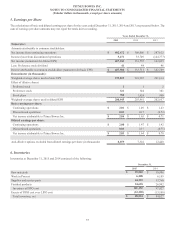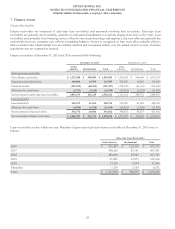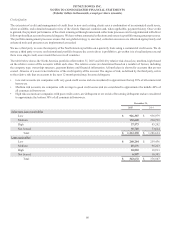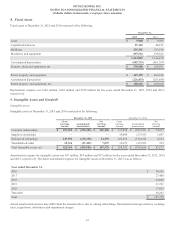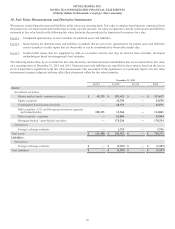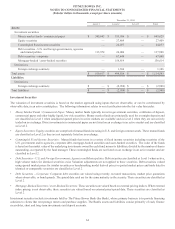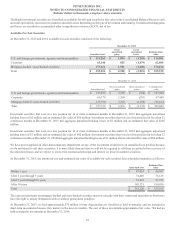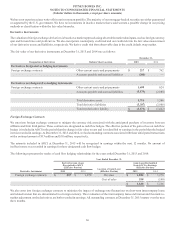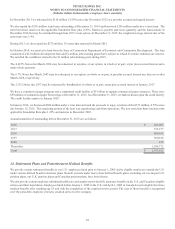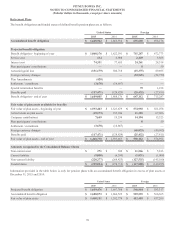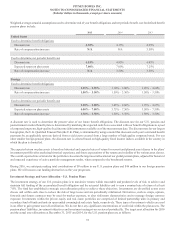Pitney Bowes 2015 Annual Report Download - page 82
Download and view the complete annual report
Please find page 82 of the 2015 Pitney Bowes annual report below. You can navigate through the pages in the report by either clicking on the pages listed below, or by using the keyword search tool below to find specific information within the annual report.
PITNEY BOWES INC.
NOTES TO CONSOLIDATED FINANCIAL STATEMENTS
(Tabular dollars in thousands, except per share amounts)
66
We have not experienced any write-offs in our investment portfolio. The majority of our mortgage-backed securities are either guaranteed
or supported by the U.S. government. We have no investments in inactive markets that would warrant a possible change in our pricing
methods or classification within the fair value hierarchy.
Derivative Instruments
The valuation of foreign exchange derivatives is based on a market approach using observable market data inputs, such as foreign currency
spot and forward rates and yield curves. We also incorporate counterparty credit risk and our credit risk into the fair value measurement
of our derivative assets and liabilities, respectively. We derive credit risk from observable data in the credit default swap market.
The fair value of our derivative instruments at December 31, 2015 and 2014 was as follows:
December 31,
Designation of Derivatives Balance Sheet Location 2015 2014
Derivatives designated as hedging instruments
Foreign exchange contracts Other current assets and prepayments $ 217 $ 762
Accounts payable and accrued liabilities (208)—
Derivatives not designated as hedging instruments
Foreign exchange contracts Other current assets and prepayments 1,499 624
Accounts payable and accrued liabilities (5,179)(2,988)
Total derivative assets 1,716 1,386
Total derivative liabilities (5,387)(2,988)
Total net derivative liability $(3,671)$ (1,602)
Foreign Exchange Contracts
We enter into foreign exchange contracts to mitigate the currency risk associated with the anticipated purchase of inventory between
affiliates and from third parties. These contracts are designated as cash flow hedges. The effective portion of the gain or loss on cash flow
hedges is included in AOCI in the period that the change in fair value occurs and is reclassified to earnings in the period that the hedged
item is recorded in earnings. At December 31, 2015 and 2014, we had outstanding contracts associated with these anticipated transactions
with a notional amount of $13 million and $18 million, respectively.
The amounts included in AOCI at December 31, 2015 will be recognized in earnings within the next 12 months. No amount of
ineffectiveness was recorded in earnings for these designated cash flow hedges.
The following represents the results of cash flow hedging relationships for the years ended December 31, 2015 and 2014:
Year Ended December 31,
Derivative Gain (Loss)
Recognized in AOCI
(Effective Portion) Location of Gain (Loss)
(Effective Portion)
Gain (Loss) Reclassified
from AOCI to Earnings
(Effective Portion)
Derivative Instrument 2015 2014 2015 2014
Foreign exchange contracts $ 887 $ 1,878 Revenue $ 1,082 $ 1,276
Cost of sales 558 (140)
$ 1,640 $ 1,136
We also enter into foreign exchange contracts to minimize the impact of exchange rate fluctuations on short-term intercompany loans
and related interest that are denominated in a foreign currency. The revaluation of the intercompany loans and interest and the mark-to-
market adjustment on the derivatives are both recorded in earnings. All outstanding contracts at December 31, 2015 mature over the next
three months.



